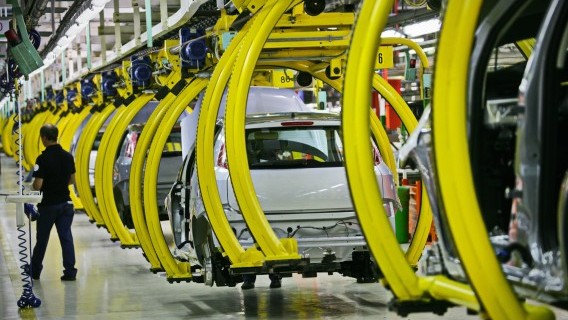Resume af teksten:
Italiens industrielle produktion steg med 2,8% i september og opvejede derved et fald på 2,4% i august. Denne stigning skal dog betragtes med forsigtighed på grund af sommerferielukninger. Gennemsnittet fra juli til september viser en kontraktion på 0,5%, hvilket indikerer fortsat stilstand i industrien gennem sommeren. Energisektoren overgik forventningerne, mens elektronik, farmaceutiske produkter, metalprodukter og maskineri så forbedringer, i modsætning til transportudstyr og tekstiler, der forblev i tilbagegang. Oktober måneds forretningstillid peger på beskedne mulige forbedringer i fjerde kvartal, men der er risiko for, at forsinkelser i tyske infrastrukturprojekter kan hæmme eksportkanalerne. På det lokale plan påvirkes investeringer af begrænsede offentlige midler. På trods af disse udfordringer forventes en lille økonomisk vækst i fjerde kvartal.
Fra ING:
This more than compensates for August’s fall, confirming that summer data has to be interpreted with a pinch of salt. Italy’s industrial stagnation is not over yet, but the picture might improve marginally over the fourth quarter

A car production line in Turin, Italy
A sharp rebound which should be taken with a pinch of salt
Italy’s seasonally adjusted industrial production increased by a hefty 2.8% on the month in September, more than compensating for August’s 2.4% fall. This rebound is clearly stronger than expected, but does not come as a complete surprise, likely being affected by the August plant closing factor.
We had warned that August data had to be interpreted with caution, as it coincided with the peak of the summer holidays. At the same time, the September rebound should not be overemphasised. It seems more sensible to look at the July-September average, which irons out the August factor. This shows a 0.5% contraction from the second quarter, which confirms that industry was not able to pick up over the summer months.
Unsurprisingly, production in all big aggregates contributed to the monthly expansion, but energy production was a clear overperformer. It’s more interesting to look at what’s happening to the year-to-date performance by sector. September data confirms a further improvement in electronic equipment, pharmaceuticals, metal products and machinery production, while transport equipment and textiles remain heavily in contraction territory.
October business confidence data points to possible small improvements in the fourth quarter
Looking at the fourth quarter, available business confidence data offers grounds for cautious optimism. In October, the current production component improved a bit, and the combination of slightly improving orders and softly declining stocks of finished goods could point to early signs of a possible cyclical rebound.
Only tentative evidence, for the time being, with the lingering risk that any delay in the implementation of the German infrastructure plan would prolong industrial stagnation instead through a softer export channel.
From the domestic angle, public finance constraints are limiting the scope for an imminent acceleration in demand for investment goods. The recent exhaustion of funds available under the Transizione 5.0 tax credit incentive plan is a case in point.
We’re still expecting positive GDP growth in 4Q
Overall, September’s industrial production data was clearly positive, yet it still indicates that the sector is struggling to drive stronger economic growth.
This applies to the third quarter, when, according to preliminary Istat data, services had to bear the burden of growth. The picture might only marginally change over the fourth quarter, when we are currently anticipating a small improvement in industrial activity, which would be consistent with a small positive reading for Italian GDP growth.
Hurtige nyheder er stadig i beta-fasen, og fejl kan derfor forekomme.


